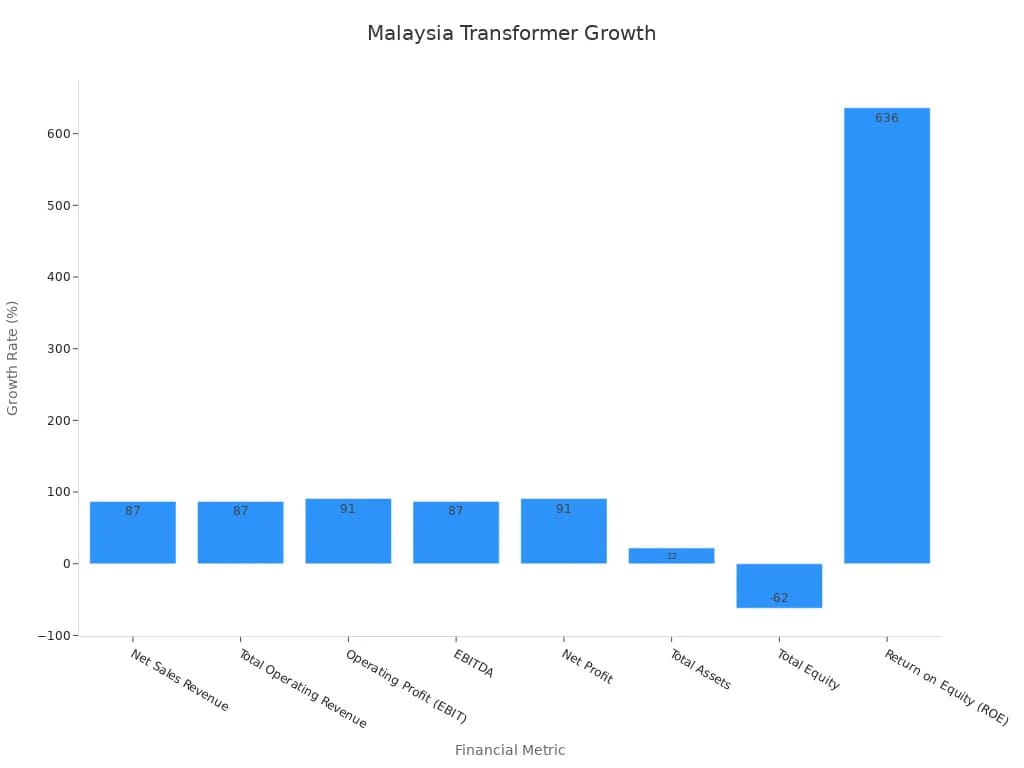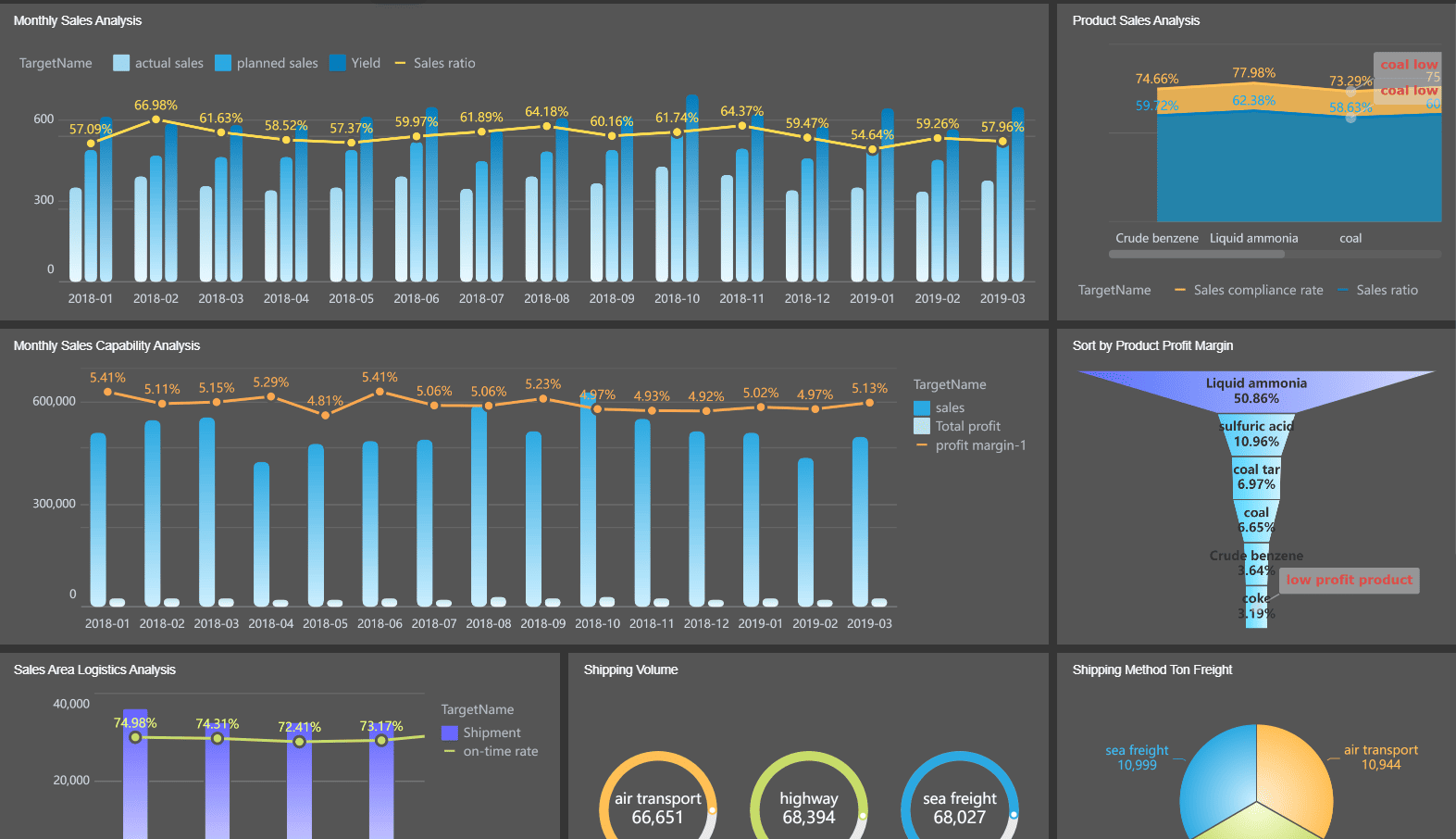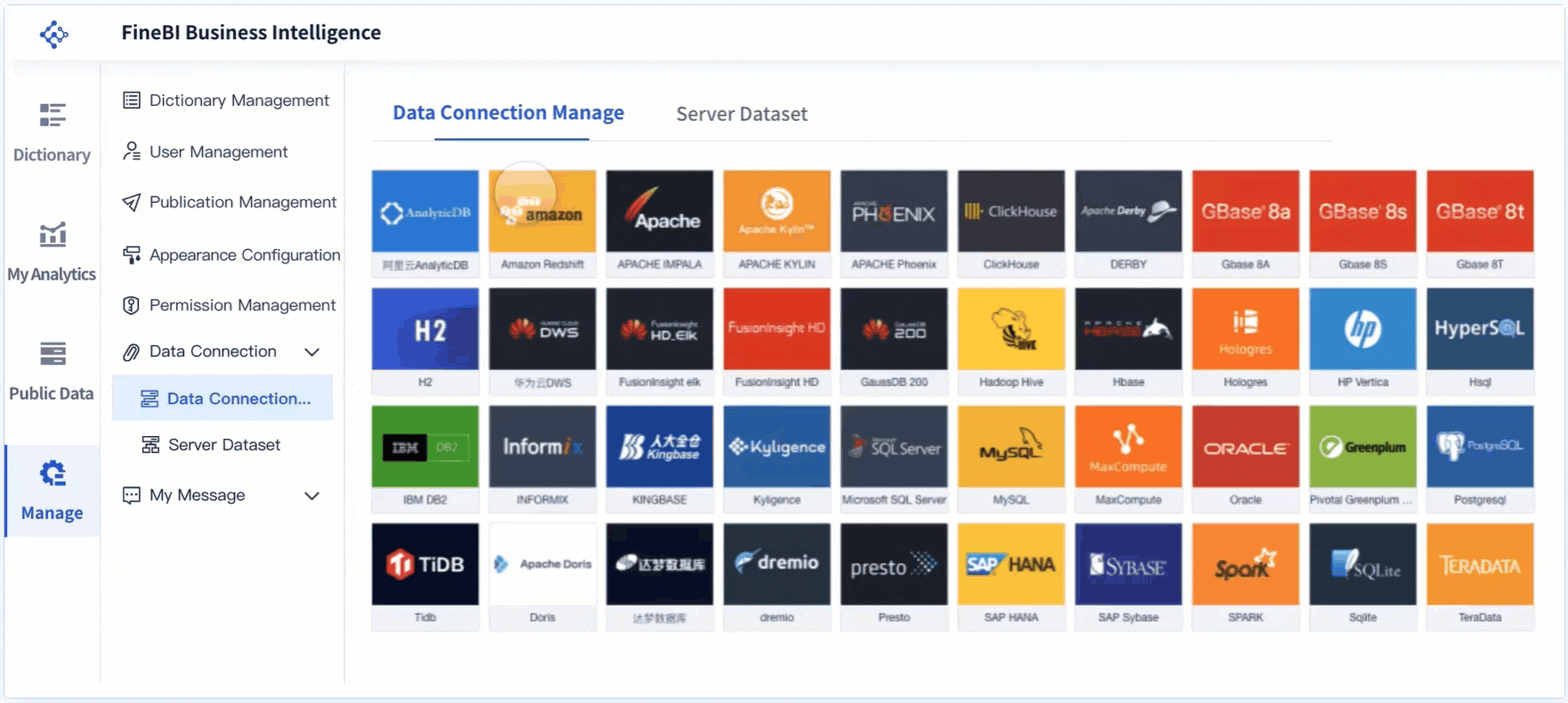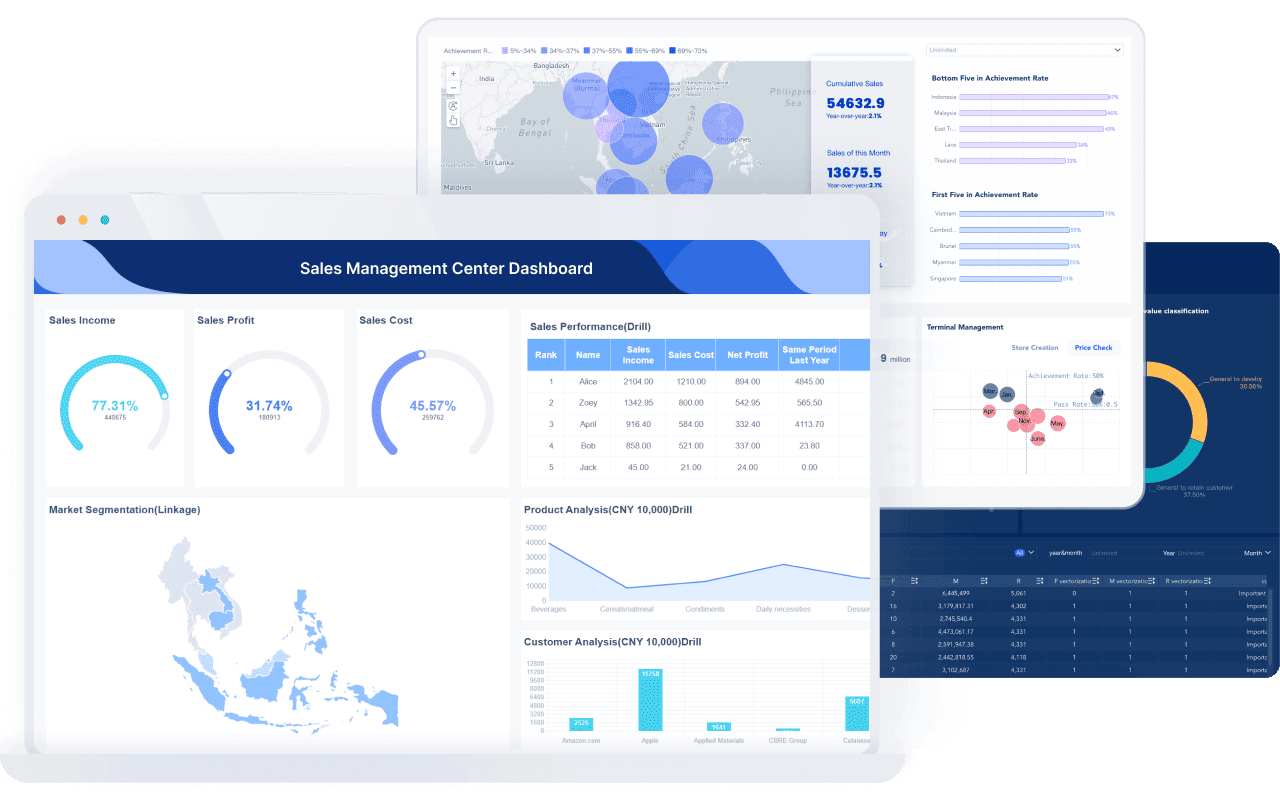You will see rapid growth in the malaysia transformer manufacturing sector in 2025. The transformer market expects a value added of around US$6.30 billion with a 2.61% growth rate. Urbanization, infrastructure expansion, and strong demand for green energy drive the transformer market forward. New data shows high demand for energy-efficient and smart technologies. Digital transformation, powered by solutions like FanRuan and FineBI, shapes the transformer market. Sustainability and data-driven manufacturing push the transformer market toward innovation. The transformer market segmentation highlights new opportunities in each category for 2025.
Key Takeaways
- Malaysia's transformer manufacturing market is growing rapidly, driven by urbanization, infrastructure expansion, and strong demand for green energy.
- Technological advances like automation, IoT sensors, and AI-based maintenance improve efficiency and reduce downtime in transformer production.
- Smart and eco-friendly transformers lower energy losses, cut costs, and reduce environmental impact, supporting sustainability goals.
- Government policies and incentives promote digital transformation, innovation, and renewable energy integration in the transformer market.
- Data analytics tools like FineBI and FanRuan help manufacturers monitor operations, make smarter decisions, and stay competitive.
Market Overview of Malaysia Transformer Manufacturing
Market Size

You will see the transformer market size in Malaysia continue to expand as part of the larger Asia-Pacific transformer market. The transformer market size for Malaysia reached USD 5.1 billion in 2024. By 2033, you can expect this figure to rise to USD 8.9 billion. The split core performance current transformers segment alone is estimated at USD 1.2 billion in 2024, projected to reach USD 2.5 billion by 2033. This growth reflects the strong operational scope of malaysia transformer manufacturing. The Asia-Pacific transformer market, which includes Malaysia, dominates the global transformer market due to rapid industrialization and infrastructure upgrades. Malaysia benefits from these regional trends, positioning itself as a key player in the global transformer market.
| Indicator | Value / Description |
|---|---|
| Market Size (2024) | USD 5.1 Billion |
| Projected Market Size (2033) | USD 8.9 Billion |
| Major Competitors | ABB, Siemens, Alstom, Mitsubishi Electric, Schneider Electric, Setrans Holding |
| Market Concentration Indicators | Market shares of top 3 and top 5 players |
Growth Rate
You will notice robust transformer market growth in Malaysia. The compound annual growth rate (CAGR) for the transformer market size in Malaysia stands at 7.2% from 2026 to 2033. The split core current transformers segment grows even faster, with a CAGR of 8.5%. Financial metrics show impressive gains. Net sales revenue and total operating revenue both increased by about 87%. Operating profit and net profit surged by around 91%. These numbers highlight the strong momentum in malaysia transformer manufacturing and the broader transformer market.

Key Trends
You will encounter several key trends shaping the transformer market. Urbanization and industrialization drive demand for new power infrastructure. The asia-pacific transformer market leads the global transformer market in adopting smart grid and renewable energy solutions. Malaysia follows these trends closely, investing in energy-efficient and digital-ready transformers. The transformer market size grows as you see more projects focused on sustainability and digital transformation. Major players in the transformer market invest in R&D, joint ventures, and partnerships to stay ahead. The global transformer market also sees a shift toward eco-friendly products and advanced monitoring systems. These trends ensure that malaysia transformer manufacturing remains competitive and innovative within the asia-pacific transformer market and the global transformer market.
Malaysia Transformer Manufacturing Trends
Technological Advancements

You see rapid technological advancements shaping the transformer market. Automation, robotics, and IoT sensors now play a central role in manufacturing. These upgrades boost efficiency and capacity. For example, automation investments have increased production output by 15%. New transformer designs now achieve over 99% electrical efficiency, a 0.5% improvement over previous models. About 35% of new transformers come equipped with IoT sensors, allowing real-time condition tracking. AI-driven predictive maintenance has reduced downtime by 20% and now operates in over 100 industrial sites. Companies like Schneider Electric have expanded manufacturing capacity by 30% through automation and modernization.
| Aspect | Quantified Evidence | Impact Description |
|---|---|---|
| Automation investment | 15% increase in production output | Automation and robotics upgrades increased manufacturing capacity |
| Electrical efficiency | >99% efficiency with 0.5% improvement over prior models | New transformer designs improved energy efficiency |
| IoT sensor adoption | 35% of new transformers equipped with IoT sensors | Smart monitoring enables real-time condition tracking |
| Downtime reduction | 20% reduction due to predictive maintenance | AI-driven maintenance reduces operational interruptions |
| Manufacturing capacity expansion | Schneider Electric increased output by 30% | Capacity expansion through automation and modernization |
| AI-based predictive maintenance | Deployed in over 100 industrial sites | Enhances reliability and operational efficiency |
![b[1].jpg](https://media.finebi.com/strapi/b_1_1242463f3d.jpg)
Smart and Eco-Friendly Transformers
You notice a strong shift toward smart transformers and eco-friendly transformers in the transformer market. These trends help you reduce energy losses, lower operational costs, and improve environmental performance. Smart transformers use advanced monitoring and control systems to optimize energy flow and support grid stability. Eco-friendly transformers use biodegradable fluids and materials that extend insulation life and improve safety.
| Metric / Attribute | Conventional Transformer | Eco-Friendly / Low-Loss Transformer |
|---|---|---|
| Annual Energy Loss (kWh) | 45,000 | 37,000 |
| Annual Loss Cost (at $0.12/kWh) | $5,400 | $4,440 |
| 25-Year Loss Cost | $135,000 | $111,000 |
| Net Savings over 25 Years | N/A | $24,000 |
| CO₂ Emission Reduction | N/A | Over 2,000 metric tons annually |
| Biodegradability of Fluid | <10% | >97% |
| Fire Point (°C) | 150 | Up to 350 |
| Insulation Life Extension | Standard | 2–4 times longer |
You gain significant savings and environmental benefits by adopting eco-friendly transformers. For example, a European utility reduced CO₂ emissions by over 2,000 metric tons each year and saved $24,000 over 25 years by switching to eco-friendly transformers.
Digitalization and Data Analytics with FanRuan and FineBI
You experience a new era of digital transformation in the transformer market. Manufacturers now use advanced data analytics platforms like FanRuan and FineBI to drive smarter decisions and optimize operations. FineBI enables you to connect to multiple data sources, process large datasets, and visualize key performance indicators in real time. You can monitor production, track energy usage, and identify trends quickly. With self-service dashboards and AI-driven insights, you respond faster to market changes and improve efficiency.

FanRuan’s FineDataLink helps you integrate data from different systems, breaking down silos and supporting unified analysis. You gain a clear view of your entire operation, from supply chain to quality control. By leveraging these digital tools, you stay ahead of transformer market trends and maintain a competitive edge. Digitalization, combined with smart and eco-friendly solutions, ensures you meet the demands of a rapidly evolving transformer market.
Malaysia Transformer Manufacturing Market Growth Drivers
Infrastructure Expansion

You see infrastructure expansion as a primary force behind transformer market growth in Malaysia. As cities grow and new developments rise, you witness a surge in demand for reliable power distribution. The transformer market responds with innovative solutions that support urbanization and industrialization. You notice several trends shaping this expansion:
- Rising demand for green power transformers, driven by renewable energy projects and grid modernization.
- Government incentives that encourage eco-friendly infrastructure and sustainability.
- Adoption of biodegradable and synthetic ester-based insulating fluids to reduce environmental impact.
- Integration of smart monitoring and IoT technologies for real-time transformer management.
- Development of low-loss, high-efficiency magnetic cores to improve energy efficiency.
- Growth in compact and modular transformer designs, ideal for urban infrastructure.
- Expansion of green transformers in renewable energy storage systems, supporting Malaysia’s renewable energy goals.
You can see these trends reflected in the actions of major manufacturers. For example, JST Power Equipment Inc. opened a new facility in Port Klang, producing 700 pad-mounted transformers in its first year and targeting 3,500 units annually by 2026. This move highlights how infrastructure growth fuels the transformer market and drives innovation.
| Aspect | Details |
|---|---|
| Market Size (2024) | USD 1.5 billion |
| Projected Market Size (2033) | USD 2.8 billion |
| CAGR (2026-2033) | 7.5% |
| Key Growth Drivers | Renewable energy projects, grid modernization, government regulations |
| Emerging Trends | Smart monitoring, eco-friendly fluids, high-efficiency cores, modular designs |
| Sector Importance | Supports Malaysia’s energy infrastructure modernization and sustainability goals |
You benefit from these advancements as the transformer market continues to evolve. The asia-pacific transformer market, with Malaysia as a key player, leads the global transformer market in adopting these new technologies.
Renewable Energy Integration
You play a vital role in the shift toward renewable energy integration. As Malaysia invests in solar, wind, and hydroelectric projects, the transformer market adapts to meet new requirements. You see a clear link between renewable energy integration and operational efficiency. Specialized transformers now reduce energy losses by 13-18%, helping you lower costs and improve grid stability.

| Evidence Aspect | Details |
|---|---|
| Market Valuation (2022) | $29.9 billion global renewable energy transformer market valuation |
| Market Projection (2032) | $57.6 billion projected market size with CAGR of 7.1% |
| Renewable Energy Capacity Growth (2022) | 9.6% increase globally (IRENA data) |
| Product Innovation | Hammond Power Solutions transformers reduce energy losses by 13-18% |
| Strategic Expansion | Eaton's $100 million manufacturing expansion to meet growing demand |
| Operational Benefits | Transformers designed for renewable integration reduce energy losses and maintenance costs |
| Market Drivers | Government incentives, grid modernization, demand for energy-efficient transformers |
You notice that over 41.92% of transformer market revenue in 2024 comes from renewable energy integration, especially solar and wind. Medium voltage transformers hold more than 50.4% of the market, while three-phase transformers account for over 90%. These trends show how the global transformer market shifts toward sustainability and efficiency.
You also benefit from government incentives and grid modernization projects, which drive demand for smart transformers with digital monitoring and eco-friendly materials. These products help you reduce operational costs and support Malaysia’s clean energy goals. The asia-pacific transformer market continues to lead in renewable energy integration, setting the pace for the global transformer market.
Government Policies
You experience the impact of government policies every day in the transformer market. Malaysia’s Industry4WRD National Policy on Industry 4.0, launched in 2018, aims to transform the manufacturing sector, including malaysia transformer manufacturing. The policy focuses on three main objectives: Attract, Create, and Transform. You see these objectives in action as the government promotes Industry 4.0 adoption, supports SME inclusion, and invests in digital infrastructure.
Note: The policy identifies key enablers such as funding, infrastructure, regulations, skills, and technology. These factors help you adopt advanced manufacturing practices and stay competitive in the global transformer market.
You benefit from national goals that include increasing labor productivity, boosting innovation capacity, and creating high-skilled jobs. The government addresses challenges like the digital divide among SMEs and skills shortages by providing targeted initiatives and funding. These efforts position Malaysia as a strategic partner in intelligent manufacturing and a hub for high-tech industries in the Asia-Pacific region.
You see the results of these policies in the rapid adoption of smart monitoring, IoT integration, and eco-friendly technologies. The transformer market continues to grow as you leverage government support to modernize operations and drive innovation. Grid modernization and renewable energy integration remain central to these efforts, ensuring Malaysia’s leadership in the global transformer market.
Medium Voltage Malaysia Transformer Manufacturing
Segment Growth
You play a vital role in the medium voltage transformer market. This segment drives Malaysia’s economic development through innovation, efficiency, and strong demand. You see leading companies like Hitachi ABB Power Grids, Siemens, and Schneider Electric competing in the transformer market, raising quality standards and fostering a dynamic environment. The medium voltage transformer market stands out for its diversity, offering oil-immersed, dry-type, pad-mounted, substation, and outdoor transformers. This variety supports a mature and versatile transformer market that adapts to many needs.
You notice that the medium voltage transformer market benefits from digitalization, automation, and smart technology integration. Sustainability efforts and government support further accelerate medium voltage transformer market growth. Malaysia acts as a regional hub for trade, innovation, and investment in the transformer market, supported by a skilled workforce and favorable policies. The medium voltage transformer market influences broader Southeast Asian trends through export, collaboration, and technology transfer.
The Malaysia Voltage and Current Transformers market is projected to reach USD 4.68 billion by 2031, growing at a CAGR of 5.1% from 2025 to 2031. Central Malaysia leads in innovation, while Penang and Johor contribute through manufacturing clusters and cross-border trade.
| Region | Growth Drivers and Trends |
|---|---|
| Asia-Pacific | Highest growth expected; rapid industrialization, infrastructure expansion, Belt and Road |
| North America | Mature market; grid modernization, renewable energy integration |
| Europe | Steady growth; energy transition, renewable adoption, flexible grid development |
Applications
You see the medium voltage transformer market powering a wide range of applications. The transformer market supports electric vehicle infrastructure, as medium voltage transformers convert grid electricity at charging stations. Data centers rely on the medium voltage transformer market for stable power, especially as cloud computing and IoT expand. You also observe the transformer market supporting renewable energy integration, with medium voltage transformers connecting solar and wind installations to the grid.
The transformer market grows as utilities invest in advanced medium voltage transformers for grid modernization. Oil-immersed transformers dominate the medium voltage transformer market due to reliability and cost-effectiveness, serving industrial, commercial, and residential sectors. Regulatory and sustainability trends encourage you to adopt energy-efficient solutions, further expanding the transformer market.
- Expansion of EV charging networks increases demand for medium voltage transformers.
- Data center growth boosts reliance on the transformer market for uninterrupted power.
- Renewable energy projects require medium voltage transformers for efficient transmission.
- Smart grid modernization enhances the transformer market with advanced monitoring and control.
| Statistical Trend / Growth Pattern | Details |
|---|---|
| Medium Voltage Revenue Share (2024) | 47.22% – largest among voltage segments |
| Preference Trend | Rising demand for dry-type medium voltage transformers |
| Role in Renewable Energy | Critical for connecting commercial solar farms to the grid |
| Utilities Investment | Significant investments in advanced medium voltage transformers |
| Industrial Sector | Fastest CAGR due to reliance on medium voltage transformers |
| Technology Integration | Supported by smart grid and renewable energy solutions |
You drive the medium voltage transformer market forward by embracing innovation, sustainability, and digital transformation. The transformer market continues to evolve, meeting the needs of Malaysia’s growing infrastructure and industrial landscape.
Market Segmentation of Malaysia Transformer Manufacturing
By Type
You encounter a diverse transformer market in Malaysia, with each type serving specific needs. The transformer market includes distribution transformers, power transformers, instrument transformers, isolation transformers, and auto transformers. Distribution transformers step down voltage for consumer use, while power transformers handle high-voltage transmission. Instrument transformers focus on measurement and protection. Isolation transformers enhance safety, and auto transformers offer efficient voltage conversion. The medium voltage transformer market features oil-immersed, dry-type, cast resin, miniature, and pad-mounted transformers. Oil-immersed transformers dominate outdoor and high-load applications. Dry-type transformers excel in indoor environments. Cast resin transformers provide durability in industrial settings. Miniature transformers support specialized equipment, and pad-mounted transformers integrate seamlessly into commercial and residential areas.
| Transformer Type | Description |
|---|---|
| Distribution Transformers | Used to step down voltage for consumer use, distributing electricity from high-voltage lines. |
| Power Transformers | Employed in high-voltage transmission over long distances, critical for generation and transmission sectors. |
| Instrument Transformers | Designed for measuring and monitoring electrical parameters, ensuring system protection and control. |
| Isolation Transformers | Used to isolate sections of electrical systems to prevent fault propagation and enhance safety. |
| Auto Transformers | Single winding transformers used for voltage conversion with improved efficiency and reduced size. |
By Application
You see the transformer market segmented by application into utility, industrial, residential, and commercial sectors. The medium voltage transformer market supports utilities with grid modernization and renewable integration. Industrial zones rely on the medium voltage transformer market for stable power. Commercial buildings and data centers require reliable transformers for uninterrupted operations. Residential areas benefit from compact and efficient solutions. The global transformer market reflects these trends, with Malaysia’s transformer market aligning closely to regional and international demands.
By Cooling Method
You notice that cooling methods play a crucial role in the transformer market. The medium voltage transformer market uses both natural and forced cooling systems. Oil-immersed transformers often use oil for cooling, while dry-type transformers rely on air. Advanced cooling systems, such as heat pipes, improve efficiency and reduce hot-spot temperatures. You find that cooling system selection depends on load, transformer size, ambient temperature, and installation environment. The global transformer market continues to innovate, optimizing cooling for safety and longevity.
- Load capacity drives the need for forced oil or air cooling in high-demand scenarios.
- Smaller transformers in the medium voltage transformer market often use natural cooling.
- Installation in confined spaces requires forced cooling for safety.
- Advanced cooling systems reduce maintenance and improve reliability.
By Rating
You observe segmentation by rating in the transformer market, with the medium voltage transformer market offering a wide range of power capacities. Transformers in the 2.5–10 MVA range serve large commercial complexes, industrial zones, and utility substations. Ratings above 10 MVA support smart grid technology and high-voltage networks. The global transformer market shows strong demand for both single-phase and three-phase transformers. Single-phase units support decentralized power and urban development. Three-phase transformers drive renewable energy integration and grid upgrades. The medium voltage transformer market adapts to these needs, ensuring Malaysia remains competitive in the global transformer market.
Competitive Landscape of Malaysia Transformer Manufacturing
Leading Companies: FineBI
You operate in a transformer market shaped by strong competition and rapid digital transformation. Major players such as CG Power, HYOSUNG, and Hitachi hold significant shares in the Asia Pacific high voltage power transformer market. These companies lead by investing in technology, product quality, and after-sales service. You also see global giants like GE, ABB, Siemens, and Mitsubishi competing in Malaysia’s transformer market. They focus on broad product portfolios and advanced solutions. FineBI stands out by enabling manufacturers to harness real-time data analytics, streamline operations, and improve decision-making. You benefit from FineBI’s ability to connect multiple data sources, visualize key metrics, and support predictive maintenance. Smaller competitors serve niche segments, adding diversity to the transformer market and encouraging innovation.

- The transformer market shows moderate to high concentration, with leading brands expanding through partnerships and new product launches.
- You notice continuous R&D investment in energy efficiency, smart grid integration, and sustainability.
- The Malaysia transformer intelligent online monitoring system market is growing fast, with a projected CAGR of 9% through 2033.
Innovations
You witness breakthrough innovations driving the transformer market forward. Manufacturers use advanced core materials like amorphous steel to cut energy loss by up to 40%. High-temperature insulation systems help transformers perform reliably in harsh conditions and reduce maintenance costs. You see new cooling solutions, such as RESIBLOC Rail, that improve thermal management and extend transformer life. IoT-enabled condition monitoring systems allow you to track transformer health in real time, supporting preventive maintenance and reducing downtime. AI-powered analytics optimize maintenance schedules and anticipate failures before they happen. Dry type transformers offer fire safety and environmental benefits, making them ideal for urban and industrial use. You also see digital twin technology and next-generation materials emerging, setting new standards for efficiency and cost savings in the transformer market.
- Modular learning and dynamic expert selection enable real-time adaptability in complex tasks.
- Neural long-term memory modules support extended sequence processing and efficient memory use.
- These advances help you manage diverse data types and improve operational efficiency in the transformer market.

Regulatory Impact
You feel the impact of regulatory frameworks on the transformer market every day. Government policies and incentives drive investment in clean energy and emissions reduction. You must comply with evolving efficiency standards, which require you to adopt new equipment and processes. These regulations increase production costs but also push you to innovate and improve energy efficiency. Policy incentives encourage you to invest in transformers for renewable energy projects and grid modernization. You face challenges such as high initial investment, skilled labor shortages, and cybersecurity risks. Regulatory support helps you overcome these barriers and fuels demand for advanced transformer systems. As you adapt to new standards, you strengthen your position in the transformer market and contribute to Malaysia’s sustainability goals.
You see the transformer market in Malaysia entering a new era of growth. The projected CAGR stands at 5.2% through 2031. Key drivers include rising electricity demand, government investment in renewable energy, and a push for grid reliability. The transformer market now favors distribution transformers and dry-type cooling. You notice smart transformers and high-efficiency models gaining traction. Digitalization and data analytics from FanRuan and FineBI help you optimize every step in the transformer market. Sustainability and regulatory programs, such as the Energy Efficiency Label, shape your choices. To stay ahead, you should invest in smart solutions, embrace data-driven manufacturing, and focus on eco-friendly practices. The transformer market rewards those who adapt quickly and leverage technology.
| Category | Details |
|---|---|
| Projected CAGR | 5.2% till 2031 |
| Market Segmentation | By Transformer Rating, Core Type, Product Type, Winding, Application, Cooling, Insulation, Phase |
| Key Growth Drivers | Electricity demand, renewable energy, industrialization, grid reliability |
| Emerging Trends | Smart transformers, high-efficiency, low-cost models |
| Leading Segment | Distribution transformers |
| Cooling Trend | Dry-type cooling rising |
| Major Market Players | ABB, Siemens AG, General Electric, SPX Transformer Solutions |
| Government Regulations | Energy Efficiency Label program |
Click the banner below to try FineBI for free and empower your enterprise to transform data into productivity!
Continue Reading About Manufacturing Engineering
What is Rapid Manufacturing and How Does It Work
FAQ

The Author
Lewis
Senior Data Analyst at FanRuan
Related Articles

How Can Employee Retention Software Help Lower Turnover Rate
Employee retention software lowers turnover by tracking engagement, identifying risks, and supporting recognition to keep employees satisfied and loyal.
Lewis
Nov 16, 2025

What is Retention and Why It Matters Across Different Fields
What is retention? It means keeping customers, employees, or knowledge over time—a key metric for loyalty, value, and success in any field.
Lewis
Nov 16, 2025

What is Data as a Product and What Make It Valuable
Data as a product means treating data as a user-focused asset, driving business value through quality, usability, and actionable insights.
Lewis
Nov 16, 2025




